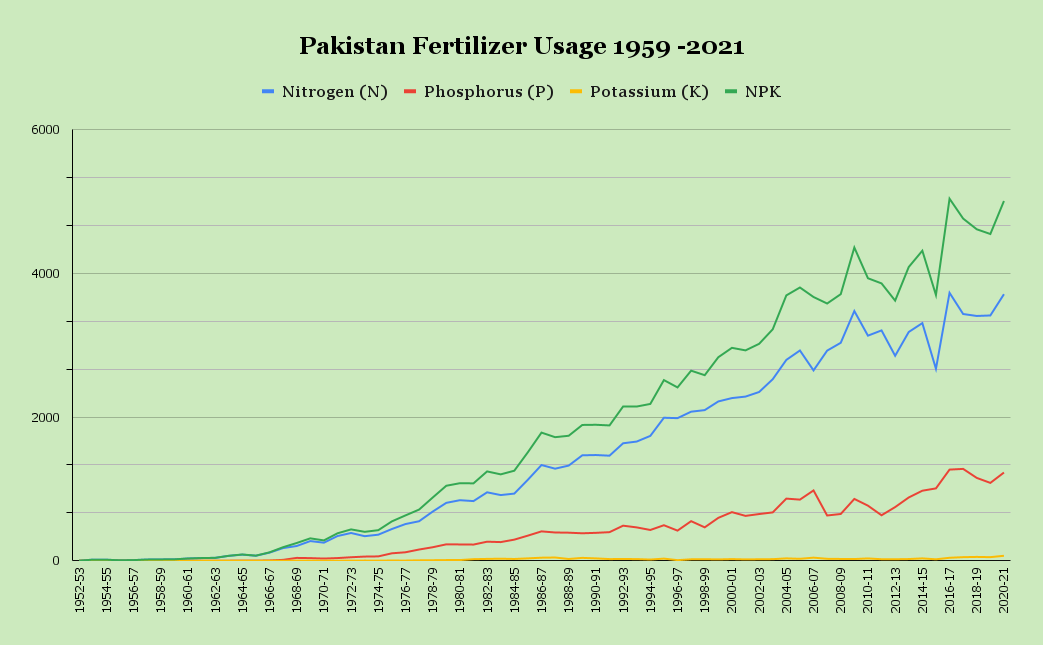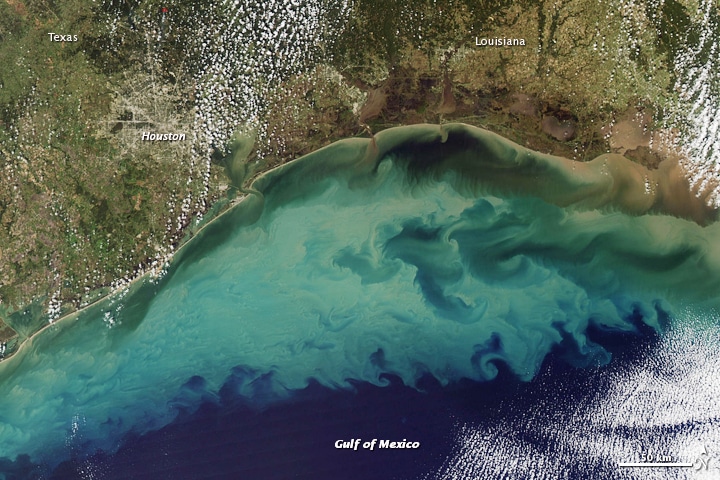We can still recall when DAP prices nearly doubled in Pakistan during the 2021 Rabi Season, and the most asked question by farmers was “What else we can use?” and there was no right answer.
Despite the world eagerly moving towards sustainable practices, developing countries like Pakistan lack the financials, the political will, and above all the curiosity to look for alternatives.
For centuries, humans have used animal manure to replenish the lost fertility, but it had always been a closed system meaning every input used to come from within the field. But in the past two centuries, scientists got smarter about the role of external nutrients and developed Urea in 1828, Superphosphate in 1840, and Diammonium Phosphate (DAP) in 1960.
These chemicals played a key role in the green revolution which boosted the yield of grain crops by over 200 percent and helped to feed the growing population of our ancestors. The global fertilizer market is worth $207 billion and is forecasted to reach $271 billion at a 3.4 percent CAGR by 2030.
Pakistan introduced nitrogen fertilizers in 1952-53 with only 1000 tons in off-take. The products containing Phosphorus and Potash were launched in 1959-60 and 1966-67 respectively with similar lower volumes. But national fertilizer offtake has increased drastically since then, to 5 million tons as of 2021 with more than a 40 percent increase since 2000 according to National Fertilizer Development Centre (NFDC) data.
But over the years, the rising awareness regarding environmental sustainability, the harmful mineral footprint of these chemicals on nature and the rising dependence of the developing world on importing these from other places has threatened food security and has brought people together to work for indigenous and eco-friendly alternatives.
Organic agriculture was the concept introduced in 1990 by Sir Albert Howard when he visited our neighboring country and was impressed with the local sustainable practices of using animal manure against chemical fertilizers. Today, the Food and Agriculture Organization (FAO) states that organic agriculture is practiced in 187 countries by 3.1 million farmers.
Coming back to chemical fertilizers, nitrogen accounts for more than half of the global fertilizer consumption and according to studies nearly two-thirds of it applied to crops becomes a pollutant. That’s nearly 75 million tonnes of excess nitrogen running into our soil and freshwater systems globally if we consider 2021 numbers.
It leads to groundwater contamination causing birth defects like blue baby syndrome, digestive cancers, and immune system malfunction. Nitrous oxide released from its application is 300 times more dangerous than carbon dioxide in heating the atmosphere. Nitrogen and phosphorus also contribute to the loss of species in marine ecosystems leaving effects that will take generations to run off.
In case you want to visualize the long-term damage, there is a ‘dead zone’ nearly three to six times the size of Karachi in the Gulf of Mexico, an oxygen-depleted region where no marine life can survive. It is caused by the excessive growth of surface algae due to fertilizer pollution that deprives the life below of oxygen.
A 2022 report by One Earth Organization found seven out of eight leading fertilizer giants secretly partnering with the fossil industry to ramp up demand to give up fossil fuels a ‘second chance’ through agrochemical production or by hiding behind questionable blue hydrogen or carbon capture technologies.
Additionally, the increased dependence of the developing world on imported fertilizers is also threatening the food security of these struggling economies. International fertilizer prices nearly tripled between January 2020 and September given supply chain disruptions due to the coronavirus pandemic and studies predict it would cause 1 million deaths and leave 100 million more malnourished if it persists.
Pakistan meets 65 percent of its DAP consumption through imports due to the lack of quality phosphate rock required for DAP production and nearly all the local production is done by Fauji Fertilizer Company (FFC) and which too imports phosphoric acid from Morocco. While Pakistan is self-sufficient mostly in urea production, our gas reserves are declining and new discoveries are stagnant.
Last year, Petroleum Division reported to Auditor General that Pakistan has used up 66 percent of its gas reserves. Although Fertilizer companies in Pakistan have a strong balance sheet and are pretty efficient in building RLNG terminals to secure gas imports, there is still a need for sustainable, eco-friendly, and indigenous alternatives for plant nutrition that can keep up the yields without destroying the ecosystems.
“We have so many indigenous alternatives and opportunities, but we are wasting all of these with our complete reliance on one side,” said Nabeel Yusuf, Founder of Radical Growth Solutions. He explained that he’s working on channeling internationally common mushroom decomposer waste mixed with yeast and sugarcane syrup (jaggery or gurr) in Pakistan on a non-profit basis that can partially or completely replace chemical fertilizers.
While the long-term effects will be found in the coming seasons, Yusuf is extremely positive that this can achieve the production goals on its own and is planning to go to Pakistan Council of Scientific & Industrial Research (PCSIR) and Pakistan Agricultural Research Council (PARC) for testing and approval. No doubt the biggest problem for our farming communities is the rising input prices and it’s keeping them from growing in any direction whatsoever.
There are several other alternatives introduced internationally from simple organic compost to fish emulsion, bone and blood meal, bat guano, biochar, seaweeds, and vermicompost, while the source of most of these is apparent from their names. While these are all-natural, have no chemical intervention, and release nutrients in a slow but sustainable way, all these have their respective inefficiencies as well that are bogging the development of organic agriculture.
For example, some of these materials take too long for results equal to chemical fertilizers while others like bone & blood meal and bat guano (from bat droppings) may not get traction in Pakistan due to their disliked sources. A lot of work is being done on vermicompost, but it constitutes living worms that need maintenance and can attract pests, not something you would like in an ideal fertilizer.
Speaking of disgusting fertilizer sources, despite the ban, nearly 32,000 hectares in Pakistan were irrigated with wastewater as of 2016. While this number seems not significant to total irrigated land, it constitutes a considerable portion of vegetable cultivation.
When DAP prices increased in 2021-22, a number of companies jumped in with their cheaper bio-organic alternatives but as it turned out, almost none of them could provide the same value other than some acidic formulations that cost almost the same.
Moreover, coming up with an alternative is one thing, and shifting farmers to that smoothly is another and judging from the state of ‘sky-touching trust’ between government and farmers and the history of ‘long-term’ policymaking our bureaucracy is known for, it will be bigger of a challenge than it seems.
You all must remember how Sri Lanka experienced riots last year that toppled their government, but what you might have missed is that in the Spring of 2021, President Rajapaksa completely banned the use of synthetic fertilizers. This unprepared sudden call played a key role in driving inflation to 54 percent with nine out of ten families skipping a meal and a 20 percent and 18 percent drop in rice and tea production respectively.
It demonstrated again the critical importance of inorganic fertilizers in present food security despite their harmful impact on the long-term environment. Moreover, most of these alternatives work better in temperate soils like in the Americas where organic matter content is already high unlike those in Pakistan.
“While the chemical fertilizers have their fair share of disadvantages, a booming population of 240 million cannot be fed with organic fertilizers alone” agreed Yusuf. He pointed out that farmers are always open to profitable solutions, and they will be open to taking a gradual shift if it’s adding value.
There is no silver bullet to this conundrum which means we need a mix of technologies and alternatives and a gradual shift toward sustainability. Science is yet to answer this question, but our problem is we are not even looking. International trade is getting more and more politically intertwined with every passing day and our food security regime is as good as our autonomy in agriculture inputs.
Farmers are using wastewater to compensate for the loss in yields due to the rise in fertilizer prices and lack of alternatives. While the biggest agriculture institutions have been under a mockery of merit for the last few decades which pollutes even the little good work that is being done just like wastewater being used for crops.



























